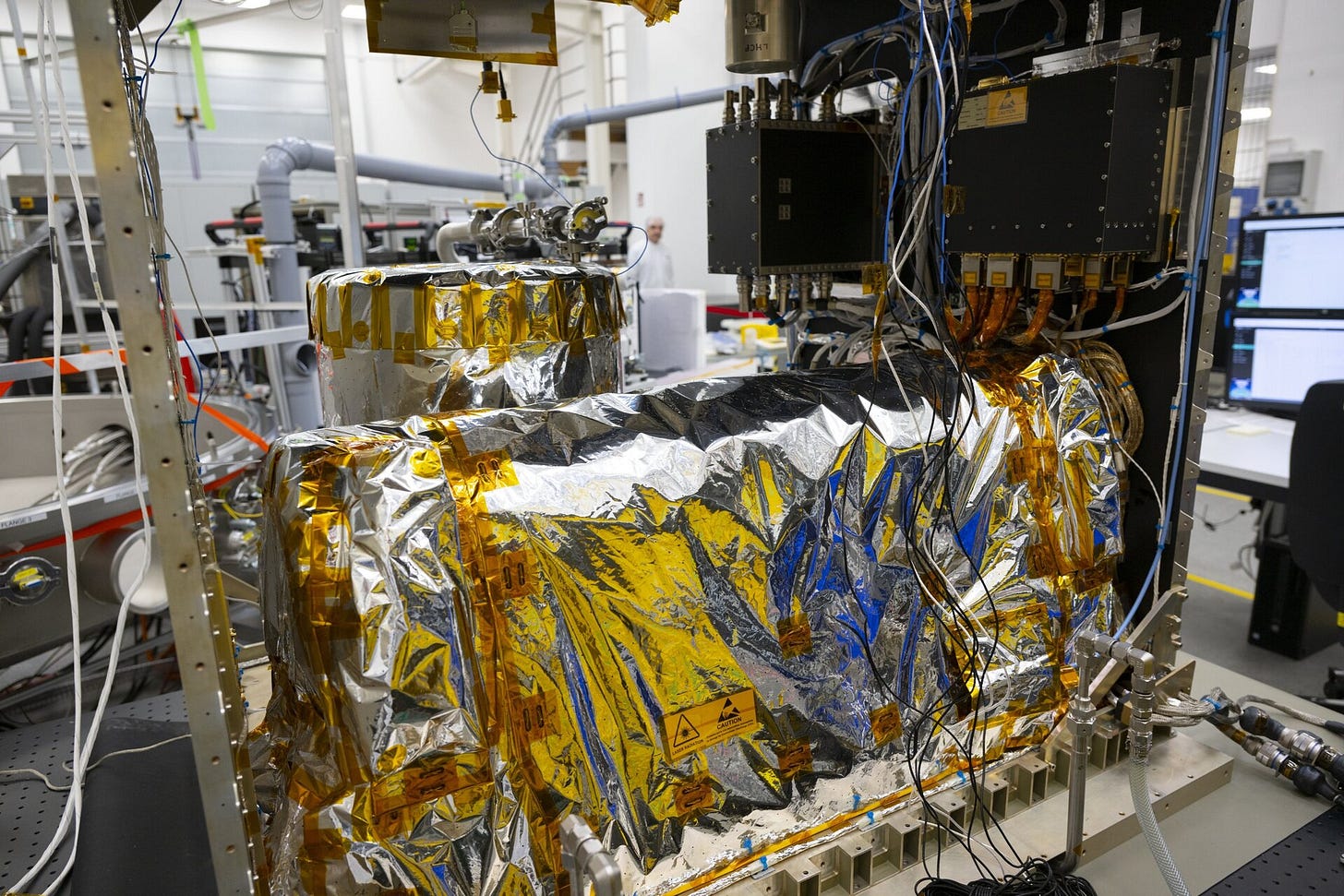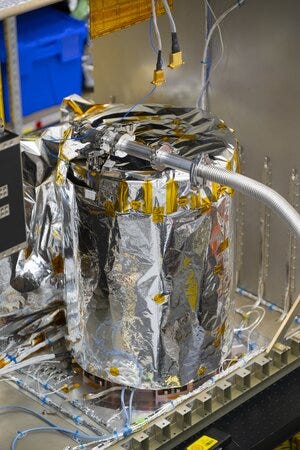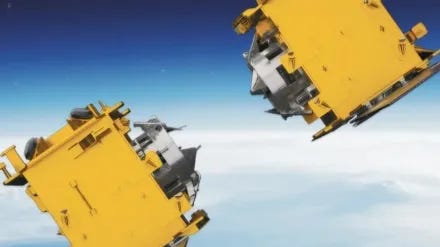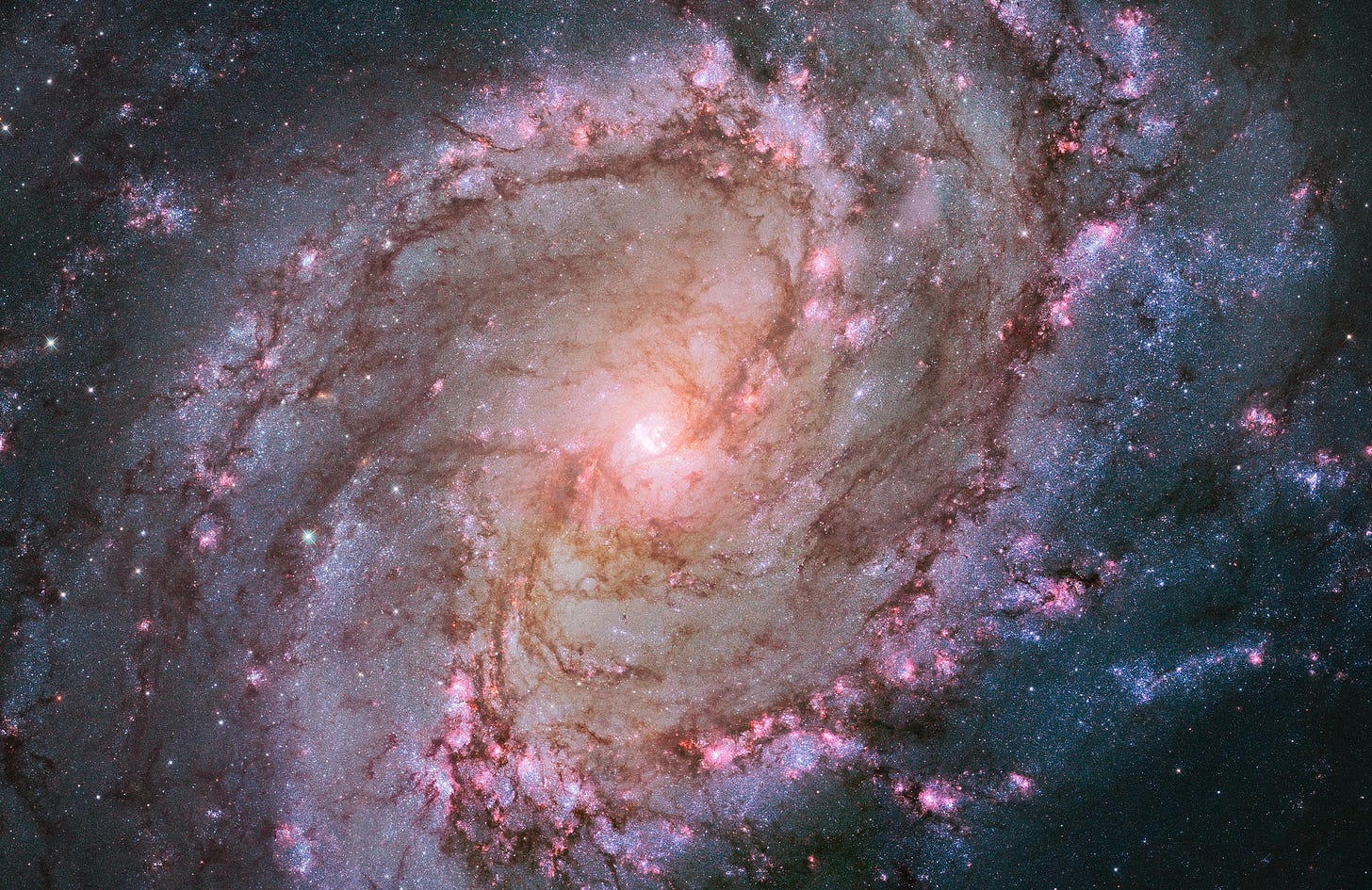Weekly - Atomic clocks launched to ISS to test relativity and more
🟡 Weekly Space News - Quick and Easy.
Our Engagement Palette!
Check out our colour-coded system for our weekly space news:
🟤 Brown: For weeks that are mundane and bland.
🟡 Yellow: For fairly interesting weeks.
🟢 Green: For the most exciting weeks.
This Palette will help you decide if this week’s news is worth your time!
This week ranks yellow 🟡 on the Engagement Palette.
Ultra-accurate atomic clocks launched to ISS to test Einstein’s theory
Last week, two ultra-accurate atomic clocks, PHARAO and SHM, were launched to the International Space Station to test Einstein’s theory related to time. PHARAO works by measuring the vibrations of a Caesium atom, and SHM uses the frequency emitted by Hydrogen. The clocks are part of the ACES mission to test a part of the theory of general relativity, which says that clocks closer to the Earth tick more slowly than those farther away from Earth (Massively simplified).
ISRO re-docks SpaDeX
ISRO launched the SpaDeX mission in December last year to demonstrate India’s satellite docking and undocking capabilities, which is essential for space stations or manned moon missions. The satellite docked in January and undocked in March on the first attempt. Now, ISRO has docked them again to conduct more experiments.
Webb may have finally discovered M83’s blackhole
The galaxy M83 has puzzled scientists for a long time, as most similar spiral galaxies host a supermassive blackhole at their centre. However, no one has been able to confirm the existence of one in M83. Last week, the James Webb telescope discovered highly ionised neon gas in this galaxy. This could be a sign of a growing blackhole at the centre of M83, but it has still not been confirmed.





